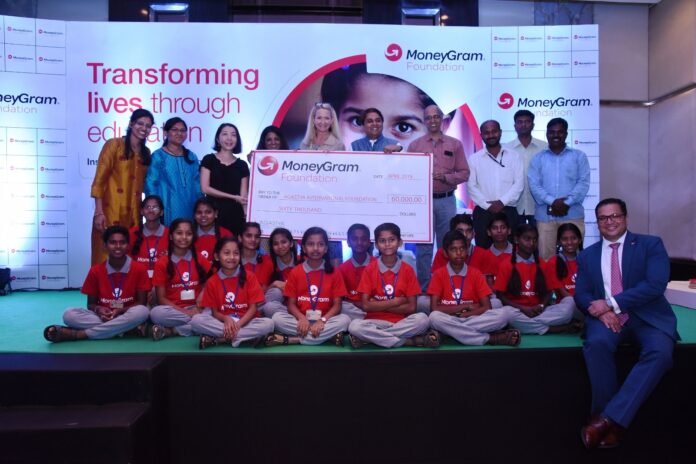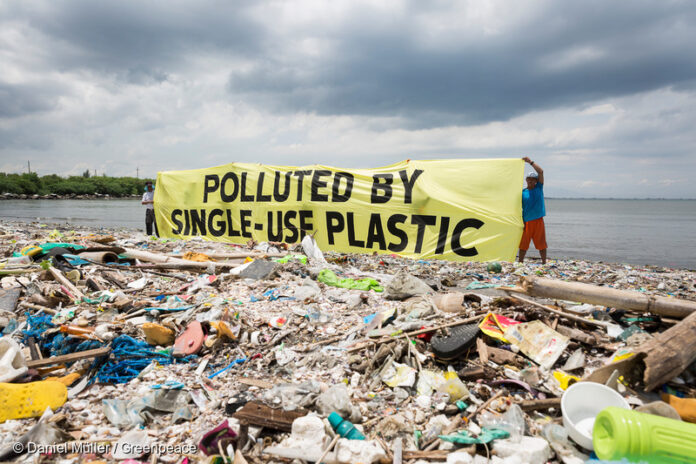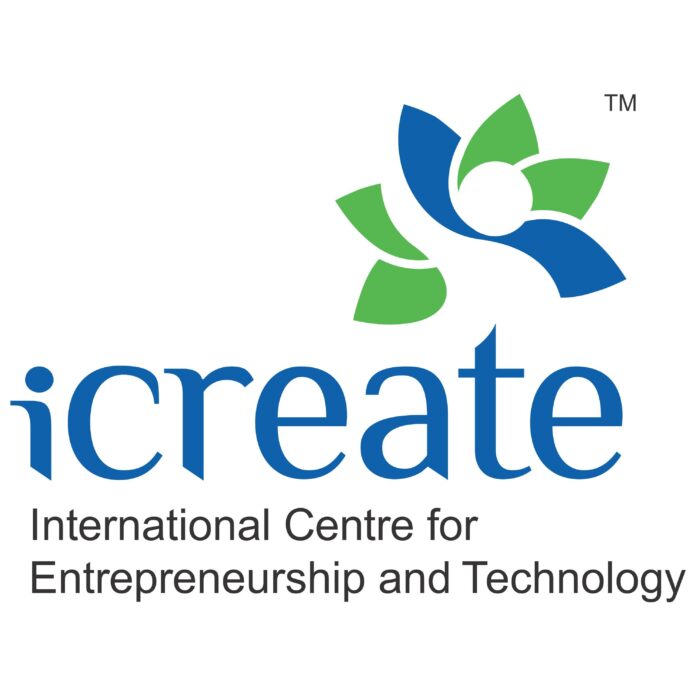World Vision India team prepares for Cyclone Fani
World Vision India’s team is on the ground and ready to respond to Cyclone Fani, which continues to intensify, threatening millions of people in India.
Tropical storm Fani, (pronounced “foe-nee”) a severe cyclonic storm formed in the Bay of Bengal with wind gusts of up to 175 mph has completely moved to the land and the landfall processes have begun.
Several of the organisation’s program areas are in the direct path of Cyclone Fani. Thus it has activated the disaster preparedness plans in these locations at the community level as a precaution. Apart from the local staff in these locations, all twenty members of the disaster management team are ready for deployment. These include experts on child protection, health, WASH and shelter. As part of its immediate relief kit, around 150,000 PuR water purification sachets have been pre-positioned for distribution.
“World Vision India is monitoring and preparing to respond to Cyclone Fani. Our field teams are in touch with the District administration and coordinating with Inter-Agency Groups for a joint assessment and for a coordinated sectoral intervention and response to assess damages and needs, once the storm passes. The community-level disaster management taskforces who are the first responders and trained by WV India are also ready,” says Franklin Jones, Interim Head – Humanitarian and Emergency Affairs, WV India.
The Cyclone could affect local areas, including the coastal districts of Puri, Jagatsinghpur, Kendrapara, Bhadrak, Balasore, Mayurbhanj, Gajapati, Ganjam, Khordha, Cuttack and Jajpur.
The organisation prioritises investment in building community resilience and the resilience of children to cope with disasters. A prepared community makes for a resilient community. World Vision India is geared to provide a timely response that caters to needs of the most vulnerable communities, especially, children, if the need arises. It has also set aside 20% of its annual local programme budget to help start the response immediately after landfall.
As a humanitarian relief organization, in times of calamities and natural disasters like Tsunamis, earthquakes, floods and droughts, World Vision India not only provides immediate relief, it is committed to ensuring that the affected communities get back on their feet through long term rehabilitation initiatives. It is also a member of Sphere India, whose members include key nodal agencies from the Government of India, UN, INGOs, NGO Networks and National NGOs.
Local authorities in the areas of Andhra Pradesh, Odisha and West Bengal are taking necessary precautions to alert residents of the impending Cyclone which is predicted to cause heavy rainfall, strong winds and a storm surge. Over 850 shelters in the state are being made available to accommodate around 10 Lakhs of people.
Tech hacks by Indian teams to combat global water crisis
Ahmedabad-based incubator International Centre for Entrepreneurship and Technology (iCreate) collaborated with EarthX, a US-based international environmental non-profit organization, to bring its flagship hackathon ‘EarthxHack’ to India.
EarthxHack, a 32-hour hackathon was held concurrently in Dallas, USA and in Ahmedabad, India, on April 27, 2019 until April 28, 2019, at the iCreate campus in Dev Dholera in Ahmedabad. A live streaming of the EarthxHack in Dallas was screened at the iCreate campus for the participants in India, to interact with and witness the talks by global experts and leaders in the US.
Inaugurating the EarthxHack in India, A.R. Khan, General Manager, National Bank for Agriculture & Rural Development (NABARD), said “At NABARD, we are always looking to collaborate with organisations and individuals who are building solutions that address challenges related to water, agriculture and development. EarthxHack is a wonderful initiative to enable young minds to build better water conservation technologies, recharge systems, harnessing of rain water, amongst other solutions, and centres like iCreate help channelize the energies of these young innovators to in the right direction.”
The hackathon saw 14 teams from diverse backgrounds and age groups, such as college students, entrepreneurs, professionals, startups and projects working on environmental innovation and technology. These participants brought in knowledge and competencies in areas such as electronics, IoT, embedded systems, sociology, broad science and technology and environmentalists.
Problem statement and innovations
This year, EarthxHack 2019 focused on creating solutions to address the global water crisis. iCreate posed 2 broad problem statements to conceptualize solutions and prototypes around:
1) production of water from the atmosphere (saline water and wastewater);
2) detection and prevention of loss of water through transmission.
Some of the innovations that emerged from the hackathon included aluminum-based water condensation system, use of solar heat for water generation from humid air, developing drones and internet of things (IoT)-based system to detect breach and leakage in canals, use of Vapour Compression Refrigeration (VCR) system to get water from the atmosphere and detection of water loss in water bodies by infra-red (IR) satellite imaging.
The winning team comprised of Dr. Vanita Prasad, Pranay Shah, Rajneesh Prasad and Nitin Jain for their innovation of an infrared satellite imaging to detect water leakage during transmission. The team won INR 50,000 and a chance of acceleration at Climate Launchpad, the world’s largest green business idea competition.
The first runner-up innovation was the real-time detection of water loss in transmission channels using a sensory device to test soil moisture for joints at multiple transmission nodes and a solar flow meter detecting water loss between 2 points. The second was condensation of air moisture in humid areas through geothermal energy. Both runner-up teams received INR 25,000 each.

At the concluding ceremony, Anupam Jalote, CEO, iCreate, said, “Many international organisations are thriving and solving global problems and they have bright Indian minds powering their solutions. We in India too, we have the capability of solving large scale problems. All we need is a slight nudge in the right direction, and iCreate is working to create such an environment that encourages world class innovations to be developed right here.At the end of the hackathon, if we are able to even address one small challenge, it is a small step towards a big change.”
CSR: Inclusive workplaces for persons with intellectual and developmental disabilities
Due to the concerted efforts of academics and disability activists alike, the dialogue around disability has moved far away from theories of ableism and segregation. Decades of work to change attitudes and approaches towards PwDs (persons with disabilities) has brought the concepts of diversity, equity and inclusion to the forefront of the disability discourse.
In the last decade, India has made significant headway in protecting disability rights. It passed a law on the Rights of Persons with Disabilities (RPwD) in 2016 to uphold its commitments under the UNCRPD. The Government of India launched the ‘Accessible India Campaign’ in 2015 and even directed the Indian Railways (India’s largest public-sector employer) to conduct a recruitment drive for PwDs, through which it hired 4,000 PwDs.
And yet, since PwDs are not a homogenous group – persons with certain kinds of disabilities continue to experience greater marginalization than others. Growing momentum around disability rights gives us an opportunity to improve outcomes for persons with intellectual and developmental disabilities (PwIDDs) and to empower them.
RPwD Act, 2016
This critical legislation replaces the Persons with Disabilities (PwD) Act, 1995 and represents a paradigm shift in the nation’s attitude towards disability. It recognizes 21 categories of disabilities, as compared to the seven categories previously identified under law. It also takes a holistic approach to disability rights and recognizes social, economic and political rights and freedoms of PwDs, in line with the UNCRPD. Legally, the Act provides 1% reservation for the intellectually disabled in government jobs.
Inclusion of disability in the SDGs
Disability is an integral part of the Global Sustainable Development Agenda, which refers to PwDs in the goals on education, employment, reducing inequalities and inclusive cities. It is important to capitalize on this international momentum towards inclusion and advocate for disability rights.
If a majority of corporates establish inclusive workspaces with the requisite infrastructure and identify specific job opportunities for PwIDDs (repeatable and consistent tasks such as data entry and packaging are usually suitable), it will help them become economically independent and successful members of their community.
How Bank of America does it
A report by Dasra titled ‘Count Me In’ lays out how Bank of America (BoA) does it. BoA’s US-based support services team has been providing meaningful employment to persons with intellectual disabilities for over 25 years. It acts as an in-house marketing and fulfillment (i.e. packaging, printing and data entry) operation that is aligned closely with BoA’s core business functions. The team’s competencies lie in:
(i) fulfillment
(ii) graphic arts/printing; and
(iii) inventory management services.
It currently comprises 300 individuals with intellectual disability who perform consistent, repeatable and operational tasks that are critical to BoA’s operations. BoA has adopted the following actions to ensure the sustainability of the support services team:
Recruitment and assistance: BoA partners with local agencies that help hire suitable candidates, provide job support after recruitment, and address all concerns during the term of employment.
Competitive costs: The support services team’s overheads are absorbed at the corporate level, and only direct supply costs are charged to customers. This not only enables customers to save money by utilizing support services but also ensures that the team gets a high volume and variety of work.
Human Resources support: A committed employee relations team liaises with the support services team to address any challenges experienced by the employees.
In conclusion
In order to bridge the disparity in employment rates between individuals with and without IDD in India, we need to actively address the difficulties that PwIDDs experience in being gainfully employed. It is imperative that the government and committed corporates partner with non-profit organizations to co-create suitable job opportunities for PwIDDs.
Such opportunities can help them become economically self-sufficient and live lives of equity, dignity and respect. While non-profit organizations can provide the technical skills required to support PwIDDs in the workplace, corporates and state agencies can use their finances and influence to create more inclusive job opportunities for PwIDDs.
Providing employment opportunities to PwIDDs is not only a civil rights issue but has proven to be a rewarding strategy for companies as well. The Institute for Corporate Productivity surveyed over 230 organizations that employ PwIDDs and found that this decision had a positive impact that led to improved culture, attracted better talent and increased customer satisfaction that translated into larger profits.
Thank you for reading. Please drop a line and help us do better.
Regards,
The CSR Journal Team
How Corporates can Fight Drug Menace in India with CSR
The non-medical use of prescription drugs is becoming a major threat to public health. Drug addiction has crippled youth across the globe. The problem is highly prevalent among the youth of Punjab in India. The All India Institute of Medical Sciences in Delhi conducted the first comprehensive study in 2015 to estimate the magnitude of drug addiction in Punjab – and the report concluded that there were more than 200,000 addicts in the state.
Despite this growing substance-abuse epidemic, private philanthropy has been barely visible when it comes to addressing the crisis and supporting new approaches to addiction treatment based on scientific research. It is imperative that the private sector become a major contributor to solutions aimed at addressing the substance abuse epidemic.
There are varied reasons for the corporates to do that, but key among them is that healthcare policy too often discriminates against those with addiction issues, while insurance companies have been reluctant to provide coverage for people who are addicted. Moreover, many central and state agencies are focused on an “arrest and incarcerate” approach and often ignore the root causes of addiction to try to rehabilitate the addict.
While there are numerous areas where both individual and institutional philanthropic support can make a difference in addressing the substance abuse epidemic, one of the areas that need focus is more research. There is very limited funding for addiction research — especially when compared to other chronic illnesses.
Institutional and individual philanthropists are needed to drive a proactive and comprehensive effort that will transform our approach to substance abuse, including helping our healthcare systems better prevent and treat addiction. Private philanthropy has an amazing opportunity to impact the trajectory of the substance abuse epidemic. It is an opportunity for philanthropy to make a real difference and, play a major role in improving the health and well-being of the people of the country as well as the world.
Thank you for reading. Your thoughts and inputs will genuinely make a difference to us. Please drop a line and help us do better.
Regards,
The CSR Journal Team
Police uncover CSR funding scam in Navi Mumbai
The Turbhe MIDC police are on the lookout for unidentified accused who forged documents of Hexaware Technologies and approached NGOs and charitable trusts across the country with a proposal to provide Corporate Social Responsibility (CSR) funds worth over INR 100 crore in the name of the IT firm at Mhape, reports The Hindu.
The scam came to light in November last year, when Gunjan Methi, a company secretary with the multi-national company, received an email from Kanta Sengal Memorial Charitable Trust in Gurugram. Suresh Kumar, one of the trustees of the organisation, told Methi that he had received an email from Hexaware Technologies, claiming to provide CSR funding worth INR 100 crore to 240 crore to the charitable trust.
Using aliases
Amar Desai, senior police inspector from Turbhe MIDC police station, said, “Kumar’s mail also mentioned that one Deepak Kumar, who claimed to be associated with Hexaware Technologies, had approached him. Methi then told Kumar that the email he received was a fake one and her company had no plans of providing any CSR funding. Soon, Methi kept receiving several calls and emails from various trusts and NGOs asking her whether the company would be extending CSR funding.”
The officer said that Methi studied the fake emails forwarded to her and learnt that the accused was using her signature and the letterhead of the company to forge the proposals to provide CSR funds. Desai said, “The firm has an open website with a few uploaded documents. The accused downloaded those documents and used the letterhead, stamp, and signature of Methi and forged the proposal letters. With the help of the Cyber Cell, we are trying to locate the IP address of the accused.”
On April 7 this year, Murlidhar Gaur from Shanti Samaj Seva in Uttar Pradesh contacted Methi and told her that Rohit Kumar and Jiginder Lakra of Hexaware Technologies had contacted him on April 2 with a funding proposal. Mr. Gaur said that the trust went on to pay INR 7.50 lakh as fees for receiving the funds. Gaur said that he had contacted Methi to check when the funds would be released. Methi then told Gaur that no such employees were associated with Hexaware Technologies and the company had made no proposal to provide CSR funds.
Pan-India scam
Desai said, “Till now, the accused seem to have approached at least seven trusts from New Delhi, Beed in Maharashtra, Rajasthan, Uttar Pradesh and Haryana. There are chances that the accused approached more trusts.” The police said that the accused used aliases such as Deepak Sharma, David, Sangeeta Manchanda, Rohit Kumar and Joginder Lakra while contacting the trusts and NGOs.
Methi said, “We have filed an FIR on April 25 to bring the vile and reprehensible people behind this to justice. We will extend our full cooperation to the police to help nab the accused.” The accused have been booked under Sections 465 (forgery), 468 (forgery for purpose of cheating) and 471 (using forged document as genuine) of the Indian Penal Code, and Section 66 (C) (identity theft) of the Information and Technology Act.
Source: The Hindu












 Namita Vikas is Group President & Global Head, Climate Strategy & Responsible Banking at YES BANK. She was recently voted amongst Asia’s 26 Top Sustainability Superwomen. As the Chief Sustainability Officer of the Bank, she spearheads Sustainable Development and CSR, thus driving sustainability principles within its core operations and its value chain towards creating stakeholder value. Namita has an Advanced Management Degree in CSR and Leadership from the Swenska Institute, Sweden.
Namita Vikas is Group President & Global Head, Climate Strategy & Responsible Banking at YES BANK. She was recently voted amongst Asia’s 26 Top Sustainability Superwomen. As the Chief Sustainability Officer of the Bank, she spearheads Sustainable Development and CSR, thus driving sustainability principles within its core operations and its value chain towards creating stakeholder value. Namita has an Advanced Management Degree in CSR and Leadership from the Swenska Institute, Sweden.






